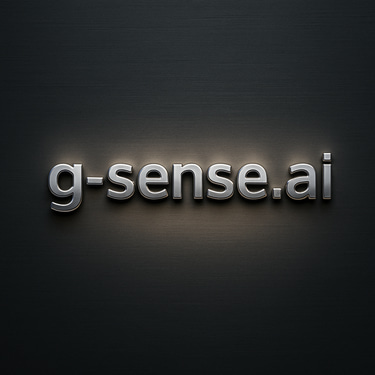Agentic AI moves the needle: where today’s savings actually come from
Agentic AI - ROI, Risks, Profits & Loss
10/7/20253 min read


On focused, high-volume workflows, businesses are realizing ~10–30% cost reductions, with many programs in customer service and IT services clustering around ~25% and 15–30% respectively. Broad automation surveys show ~40% of firms report ≥25% cost reduction in the areas they automated most. The spread depends far more on workflow selection and integration quality than model choice.
What’s changed in 2025
From copilots to doers. Enterprise “agentic” patterns (tool use, multi-step plans, approvals) are leaving the lab and executing tasks—though the market is noisy and immature.
Adoption is up—but value is uneven. McKinsey’s 2024 survey showed rapid genAI uptake, yet only a minority directly reported cost reductions across all functions—underscoring why selecting the right workflows matters.
The savings range you can stand behind
IT services & managed ops: Independent sourcing/benchmarking analysis pegs 15–30% savings in IT services contracts when AI is paired with benchmarking and SLA redesign.
Customer service: Aggregated industry roundups repeatedly cite ~25% service cost reduction where AI handles routing, retrieval, and first-line resolutions before human escalation.
Cross-function automation: 2025 automation index data: 36.6% of organizations report ≥25% cost reductionfrom automation efforts; roughly half report ≥25% efficiency gains.
Takeaway: A credible expectation for near-term programs is ~10–30% cost reduction on targeted workflows, rising above that only with deep process redesign and high automation coverage. (Macro studies still project massive long-run value, but those aren’t direct P&L (Profit and Loss) savings you’ll book this quarter.)
Where the savings show up
Deflection & auto-resolution (support, HR, ITSM): fewer live contacts, lower $/ticket.
Cycle-time compression (AP/AR, claims, onboarding): fewer touches, faster throughput.
Sourcing/contracting leverage (IT & BPO): AI-informed benchmarking and workload rebalancing.
How leaders actually hit the numbers (and keep them)
Start with “agentable” work. High volume, rules/knowledge-heavy, integrated with 3–5 tools (search, CRM, ticketing, payments). Avoid edge-case-heavy flows in phase 1.
Modern RAG, not just chat. Hybrid retrieval + metadata filters + reranking + feedback loops. This narrows hallucinations and rework—the quiet killers of ROI. (McKinsey’s 2024 caution on realized savings echoes this.)
Measure like ops, not labs. Instrument deflection rate, AHT, $/ticket, backlog days, recontact rate, SLA attainment. Tie model/agent changes to KPI shifts weekly.
Right-size ambition. Gartner warns many “agentic” projects will be scrapped for unclear value; keep scopes narrow, with approval gates and rollback paths.
Risk & realism
Not every deployment prints savings—MIT research (as reported) notes most genAI implementations miss P&L because they’re bolted onto old workflows rather than redesigning them. Translation: integration quality beats novelty.
Quick wins by function (90-day ideas)
Customer service: AI triage + answer synthesis + form-fill into CRM; human-approval rails for refunds/credits. Aim for 20–30% deflection and 10–20% AHT reduction.
IT services: Contract “should-cost” models + ticket clustering + auto-remediation for known issues; renegotiate scope with 15–30% savings target.
Finance ops: AP/AR inbox agents + 3-way match + variance explanations; measure cycle-time and touch-rate drops. Broad automation benchmarks suggest ≥25% reductions are common when coverage is high.
How we help
We build production-grade agents that do work, not just chat—wrapping them with retrieval, observability, and policy guardrails. Typical engagement: identify 2–3 candidate workflows, model expected savings, ship in sprints, and prove ROI on live KPIs within a quarter. Want a custom forecast for your stack? Send us one workflow and three KPIs—we’ll draft the architecture and savings model.
Sources & further reading
McKinsey, The state of AI 2024/2025—adoption is high; realized cost savings depend on function and execution. https://www.mckinsey.com/capabilities/quantumblack/our-insights/the-state-of-ai-2024
InformationWeek/ISG—15–30% savings in IT services contracts with AI + benchmarking. https://www.informationweek.com/machine-learning-ai/find-ai-cost-savings-of-30-in-your-services-with-benchmarking
Enterprise Automation Index 2025—36.6% of orgs report ≥25% cost reduction from automation. https://www.prnewswire.com/news-releases/enterprise-automation-index-2025-73-of-companies-increased-automation-spend-nearly-40-report-at-least-25-cost-reduction-302506095.html
Fullview’s 2025 roundup—~25% customer service cost reduction figure appears consistently across industry summaries. (Use as directional support alongside your own data.) https://www.fullview.io/blog/ai-customer-service-stats
Gartner via Reuters—agentic AI projects risk cancellation without tight scoping and value tracking. https://www.reuters.com/business/over-40-agentic-ai-projects-will-be-scrapped-by-2027-gartner-says-2025-06-25/
Macro value context: generative AI’s economy-wide potential (not immediate P&L). https://www.mckinsey.com/capabilities/mckinsey-digital/our-insights/the-economic-potential-of-generative-ai-the-next-productivity-frontier
g-sense.ai
Expert AI solutions for businesses.
CONTACT
NEWSLETTER
hello@g-sense.ai
+1 (830) 245 9750
© 2025. All rights reserved.
